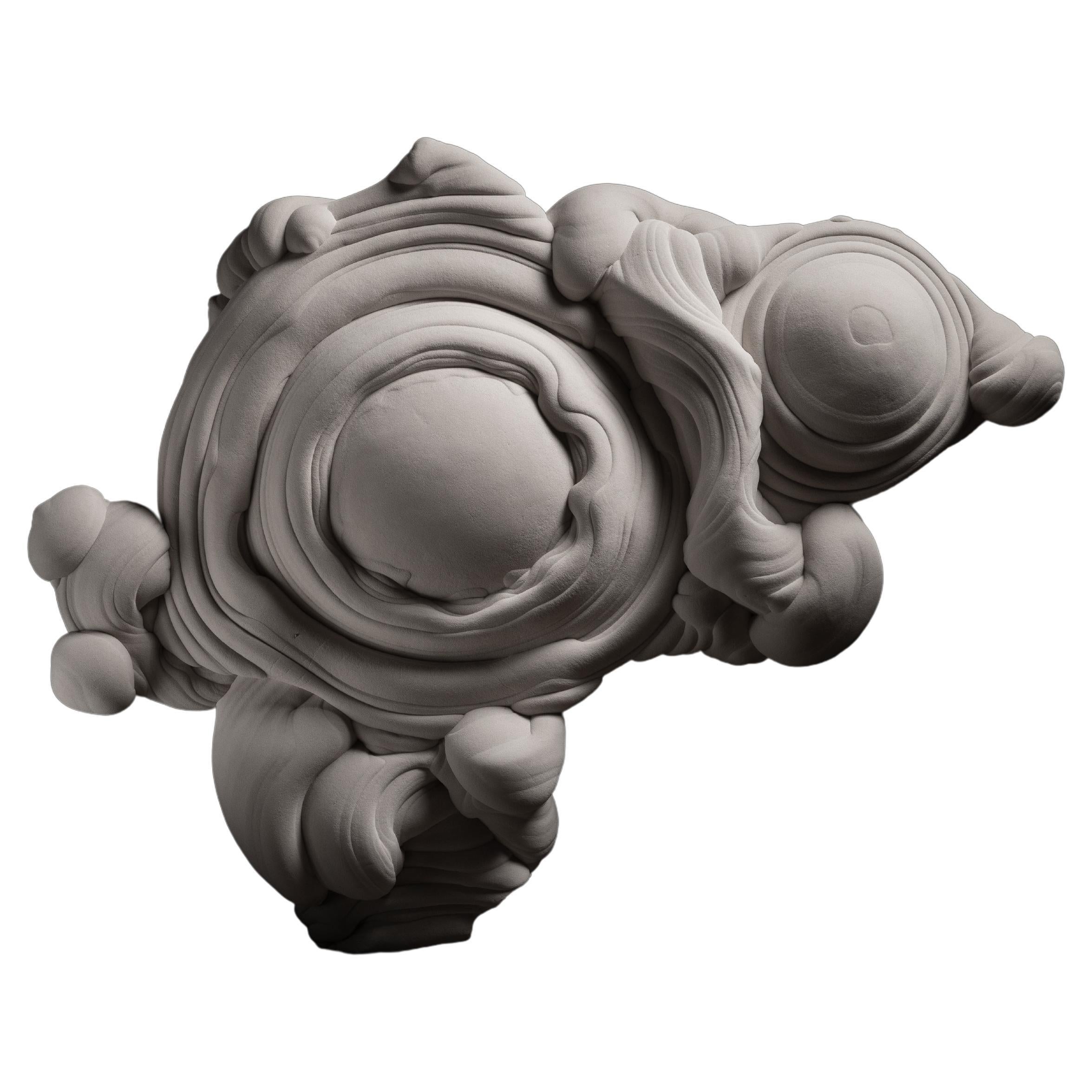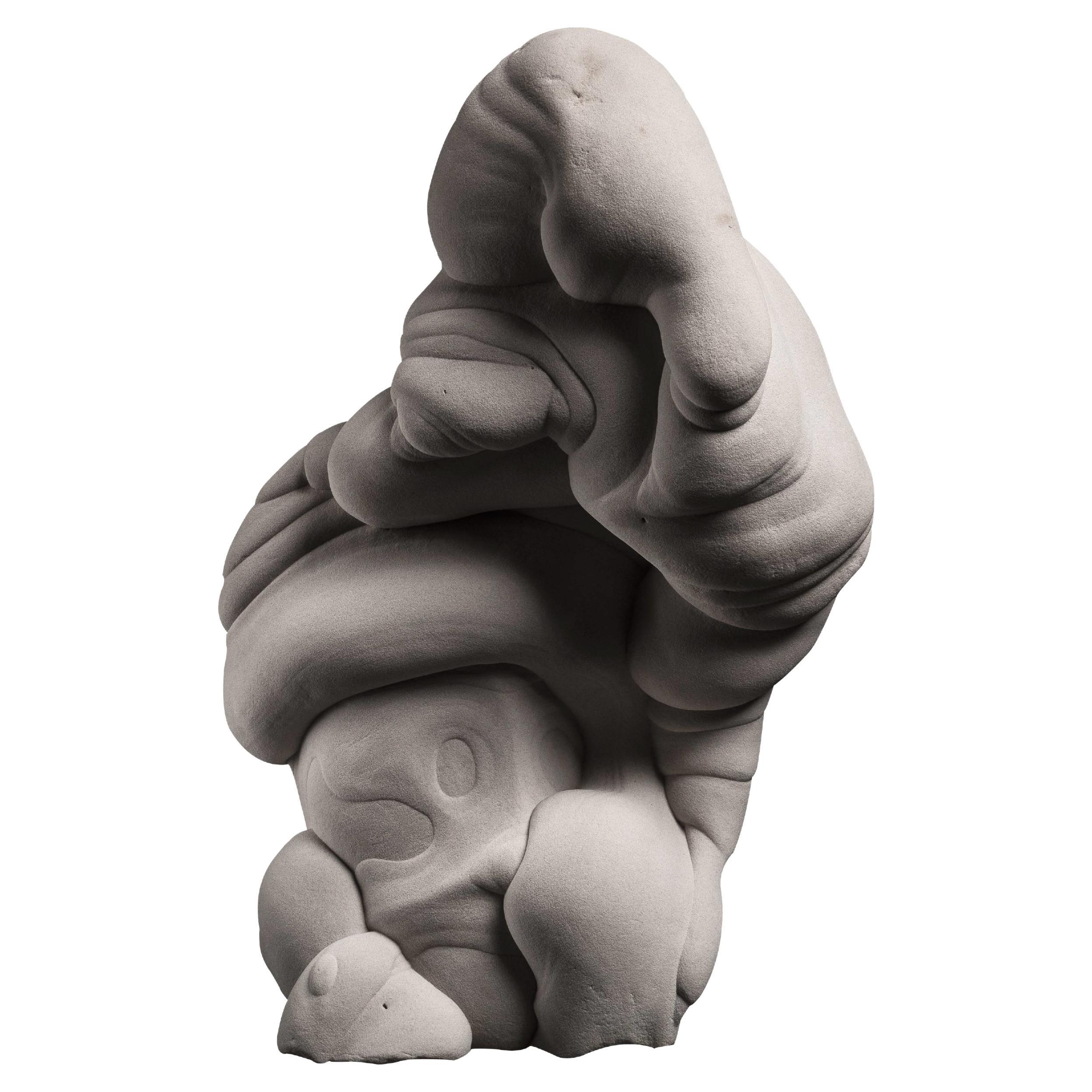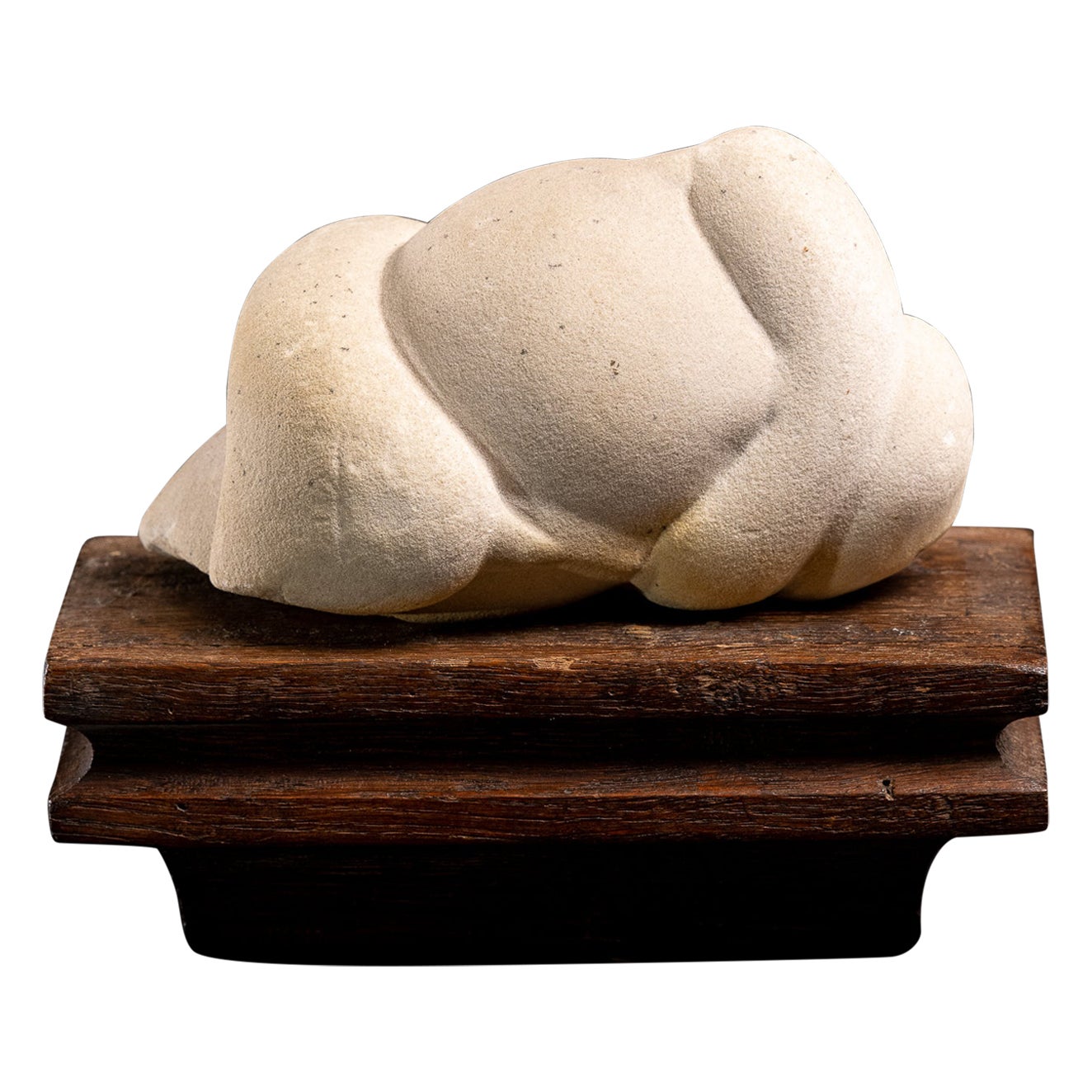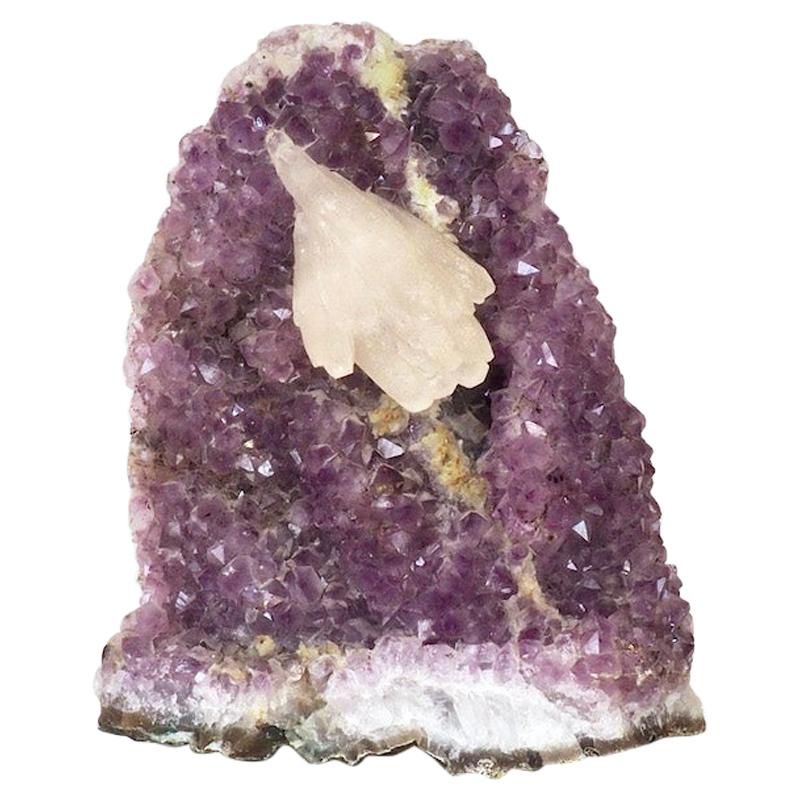Want more images or videos?
Request additional images or videos from the seller
1 of 9
Gogotte Formation
About the Item
Gogotte formation
circa 30 Million y/o
Measures : 42 x 21 x 63 cm.
A magnificent example of a gogotte formation, composed of thick swirls and folds of sparkling sandstone. Discovered in the Oligocene sand dunes of Fontainebleau, France, formed circa 30 million years before present or later. The incredible, almost otherworldly appearance of gogottes may easily be mistaken for the work of a most talented artist. In fact, these sandstone sculptures are entirely natural in origin. They have been found in multiple locations but those from Fontainebleau, such as the present example, are the most remarkable. Thirty-five million years ago, a sea covered what is now the forest of Fontainebleau, and dunes of exceptionally fine and homogenous sand formed. As silica-rich water filtered through this sand, it turned into stone. The flow of water finely modelled the sandstone into the forms we now know as gogottes. These are rare and are only found sporadically, several metres buried underground. They owe their sparkling white appearance to the extreme and unmatched purity of the Fontainebleau sand, sometimes reaching a composition of 99.9% silica. Each of them is unique – a masterpiece slowly fashioned by the hands of Nature.
The name “gogotte” was coined by French geologist Claude Guillemin (1923- 1994), inspired by the children’s book series Babar the Elephant. In one of the books, a group of monsters called Gogottes are shown hiding behind rocks. These rocks reminded Guillemin of the sandstone sculptures from Fontainbleau, and the name has stuck since. These strange and mysterious specimens have inspired many artists, such as the French surrealists or the English sculptor Henry Moore, who owned his own example. The Sun King himself, Louis XIV, admired these natural artworks and kept them in his gardens at Versailles, where they can still be admired today. Gogottes can also be found in some of the world’s leading natural history museums, notably the Smithsonian Institution, Houston Museum of Natural Science and the Natural History Museum in London.
Provenance:
Found in the sand dunes of Fontainebleau, 1989-1994.
- Dimensions:Height: 16.54 in (42 cm)Width: 8.27 in (21 cm)Depth: 24.81 in (63 cm)
- Materials and Techniques:
- Place of Origin:
- Period:
- Date of Manufacture:circa 30 Million y/o
- Condition:
- Seller Location:London, GB
- Reference Number:
About the Seller
5.0
Recognized Seller
These prestigious sellers are industry leaders and represent the highest echelon for item quality and design.
Established in 2008
1stDibs seller since 2014
100 sales on 1stDibs
Typical response time: 7 hours
Associations
LAPADA - The Association of Arts & Antiques DealersInternational Confederation of Art and Antique Dealers' AssociationsThe British Antique Dealers' Association
- ShippingRetrieving quote...Ships From: London, United Kingdom
- Return PolicyA return for this item may be initiated within 14 days of delivery.
More From This SellerView All
- Natural Gogotte FormationLocated in London, GB'Louis XIV' Gogotte Formation Measures: circa 30 Million y/o 105 x 76 x 15 cm A magnificent example of a gogotte formation, nicknamed Louis XIV, composed of thick swirls and folds of sparkling sandstone. Discovered in the Oligocene sand dunes of Fontainebleau, France, formed circa 30 million years before present or later. The incredible, almost otherworldly appearance of gogottes may easily be mistaken for the work of a most talented artist. In fact, these sandstone sculptures are entirely natural in origin. They have been found in multiple locations but those from Fontainebleau, such as the present example, are the most remarkable. Thirty-five million years ago, a sea covered what is now the forest of Fontainebleau, and dunes of exceptionally fine and homogenous sand formed. As silica-rich water filtered through this sand, it turned into stone. The flow of water finely modelled the sandstone into the forms we now know as gogottes. These are rare and are only found sporadically, several metres buried underground. They owe their sparkling white appearance to the extreme and unmatched purity of the Fontainebleau sand, sometimes reaching a composition of 99.9% silica. Each of them is unique – a masterpiece slowly fashioned by the hands of Nature. The name “gogotte” was coined by French geologist Claude Guillemin (1923- 1994), inspired by the children’s book series Babar the Elephant...Category
Antique 15th Century and Earlier French Natural Specimens
MaterialsSandstone
- Natural Gogotte FormationLocated in London, GBA magnificent example of a gogotte formation composed of thick swirls and folds of sparkling sandstone. Discovered in the Oligocene sand dunes of Fontainebleau, France, formed circa 30 million years before present or later. The incredible, almost otherworldly appearance of gogottes may easily be mistaken for the work of a most talented artist. In fact, these sandstone sculptures are entirely natural in origin. They have been found in multiple locations but those from Fontainebleau, such as the present example, are the most remarkable. Thirty-five million years ago, a sea covered what is now the forest of Fontainebleau, and dunes of exceptionally fine and homogenous sand formed. As silica-rich water filtered through this sand, it turned into stone. The flow of water finely modelled the sandstone into the aesthetic concretions we now know as gogottes. These are rare and are only found sporadically several metres deep into the ground. They owe their sparkling white appearance to the extreme and unmatched purity of the Fontainebleau sand, sometimes reaching a composition of 99.9% silica. Each of them is unique – a masterpiece slowly fashioned by the hands of Nature. The intriguing name of “gogotte” was coined by French geologist Claude Guillemin (1923- 1994), who was inspired by the children’s book series Babar the Elephant. In one of the books, a group of monsters called Gogottes are shown hiding behind rocks. These rocks reminded Guillemin of the sandstone concretions...Category
Antique 15th Century and Earlier Natural Specimens
MaterialsOther
- Natural Gogotte FormationLocated in London, GBA magnificent example of a gogotte formation composed of thick swirls and folds of sparkling sandstone. Discovered in the Oligocene sand dunes of Fon...Category
Antique 15th Century and Earlier Natural Specimens
MaterialsSandstone
- Large Leaf Fossil from the Green River FormationLocated in London, GBA large and beautifully preserved fossilised leaf from the Green River formation, a site which has brought forth some of the best-preserved fossi...Category
Antique 15th Century and Earlier North American Wall-mounted Sculptures
MaterialsOther
- Banded Iron Formation with Red Jasper, Haematite & Tiger's EyeLocated in London, GBBanded Iron Fossil Formation Circa 2.9 Billion y/o This spectacular banded iron formation from Port Hedland, Western Australia, provides evid...Category
Antique 15th Century and Earlier Australian Natural Specimens
MaterialsMulti-gemstone
- Pre-Solar Stardust, a Piece of the Allende MeteoriteLocated in London, GBPre-Solar Stardust - A piece of the Allende Meteorite Carbonaceous Chondrite - CV3 Height 6.98 cm 280 g “This individual sample of the Allende CV3 carbonaceous chondrite shows ...Category
Antique 15th Century and Earlier Mexican Natural Specimens
MaterialsStone
You May Also Like
- Large Natural Gogotte FormationLocated in Pease pottage, West SussexA Gogotte Formation Of natural form, dating from the Oligocene period (30 Million years ago). Beguiling natural mineral formation, they are the result of calcium carbonate binding w...Category
Antique 15th Century and Earlier French Natural Specimens
MaterialsStone
- Small Gogotte De Fontainenbleue, Natural Mineral SculptureLocated in Leuven , BEA nice example of a gogotte formation composed of thick swirls and folds of sparkling sandstone. Discovered in the Oligocene sand dunes of Fontainebleau, France, formed circa 30 mill...Category
Antique 15th Century and Earlier French Natural Specimens
MaterialsSandstone
- Amethyst Calcite FormationLocated in London, GBAn amethyst crystal with central calcite piece.Category
Antique 15th Century and Earlier Unknown Prehistoric Natural Specimens
MaterialsAmethyst
- Green organic formationLocated in London, GBA wonderful display piece showing a prominent thick stalactite at the centre, covered with glass-like green-brown druzy quartz. The lower border polished to reveal a wonderful sea gr...Category
Antique 15th Century and Earlier Uruguayan Natural Specimens
MaterialsAgate, Amethyst, Quartz
- Small floral formationLocated in London, GBA small formation consisting of a white quartz stalactite on a bed on lilac amethyst. This piece was legally and ethically sourced directly in the prestigious mines of Uruguay, Sout...Category
Antique 15th Century and Earlier Uruguayan Natural Specimens
MaterialsAgate, Amethyst, Quartz
- Smoky Quartz FormationLocated in London, GBA wonderful large formation of smokey quartz, unpolished and with all its natural lustre, the piece is wonderfully sculptural in quality. This piece was legally and ethically sou...Category
Antique 15th Century and Earlier Brazilian Natural Specimens
MaterialsQuartz
Recently Viewed
View AllMore Ways To Browse
Antique Sand
Antique History Book
Sun King
Decorative Book Cover
Antique French Watering Can
Versailles Louis Xiv France
O Henry
Natural Rocks
French Antique Coins
English 15th
Monster Sculpture
Louis The 15th
Science Model
Stone Elephants
English 15th Century
15th Century English
15th Century English
Antique Childrens Books





